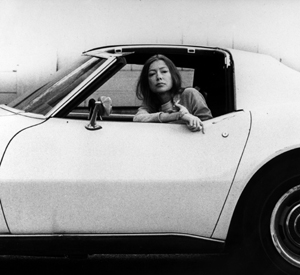 Not long ago, I met Vivian (not her real name) for lunch.
Not long ago, I met Vivian (not her real name) for lunch.
We hadn’t seen each other since I remarried in 2004. There had been no falling out, no one said anything mean or stupid—our lives just diverged, started taking place on different paths.
We met back in 2000, at church. We hit it off quickly and discovered we had a lot in common: we were both with divorced men with two kids, and we were both struggling.
I hate to even call the guy my husband. We were married just under three years. He doesn’t feel like he was ever my husband.
My absolute last chance to back out came during our wedding ceremony—yes, during—when two minutes into it, my fiancé, aka Mr. Gadget, stopped the minister.
“I forgot to turn on the video camera,” he said.
While he fiddled with the camera, the minister looked at me and I looked at him. And I kid you not: a massive thunderstorm broke out. The whole room got dark. I should have come to terms right then and there with the fact that the reason our wedding was being taped was because no one in his family or my family had bothered to show up.
Lightening struck. Thunder shook the church. A voice inside my head said: Walk back down the aisle, now.
I didn’t.
Three months later we were in counseling. We went through four, five different therapists as he looked for the one that would tell him exactly what he wanted to hear.
In the meantime, Vivian and I met other people at our church who were trying to make their blended families work too. We formed a step-parenting group, small but mighty. The women, and some of the men, in that group became my closest friends for a while. Some of us are still in touch via social media. But we don’t talk like we used to. It makes me sad sometimes, because they really helped me through a very dark period in my life, not all of it because of this guy. I wonder if they remember that they helped save my life.
 Things came to a head at my house when, late one night, my sixteen-year-old stepson said, “I don’t have to listen to you, you’re not my parent,” grabbed my arms, twisted them, and left welts the thickness of fettucini. My husband had already gone to bed. I woke him up and told him what happened.
Things came to a head at my house when, late one night, my sixteen-year-old stepson said, “I don’t have to listen to you, you’re not my parent,” grabbed my arms, twisted them, and left welts the thickness of fettucini. My husband had already gone to bed. I woke him up and told him what happened.
“You probably deserved it,” he said.
The next day he got in my face. I started moving out my things while he wasn’t around. Two of my step-parenting friends stored them in their shed, one went to my divorce hearing with me. We all went to Vivian’s wedding.
I stopped going to church. Dated. Met my current husband and got remarried. I didn’t see Vivian again until earlier this year, when she emailed me out of the blue one week before her divorce hearing. Her husband had problems similar to my ex’s, with the extra-added bonus of substance abuse and certain other addictions.
She looked very tired. Beat up, with no bruises. Cried when we touched on certain subjects. She asked me a lot of questions about what happened in my own situation, which had ended nine years ago almost to the day.
Vivian was scared to go to her divorce hearing, but she did, and survived. When she emailed me to say, “Let’s have lunch,” she added, “I have a present for you.”
After we sat down, she slid a book across the table. The full import of which did not occur to me at first. The cover is that of a 1951 Harlequin novel; inside, journal paper.
In the back, behind a tab, is graph paper, the sight of which always takes me back to my father, a retired NASA engineer, who brought the stuff home from work, which I used to pilfer and write and draw on. My boxes of childhood memorabilia are rife with it. One of the tablets my dad gave me back then is in my office drawer.
“Thank you,” I said to Vivian.

A lot of the questions Vivian asks me force me to go back to a time I really don’t want to go back to. It was horrible. I wish I hadn’t done it. I wish I had walked back down that aisle.
But I did do it. So did she. Despite the fear of losing ourselves in these relationships; being persona non grata at a time in our lives when it definitely should have been all about us; the anger over not trusting ourselves.
Now that I am through it, I am happy to reach in and help pull someone else through. Happy it’s been nine years, and that I can actually laugh at bits of it. To have new graph paper to draw on. To have Vivian back and see that she is prettier every time I see her.






































Recent Comments